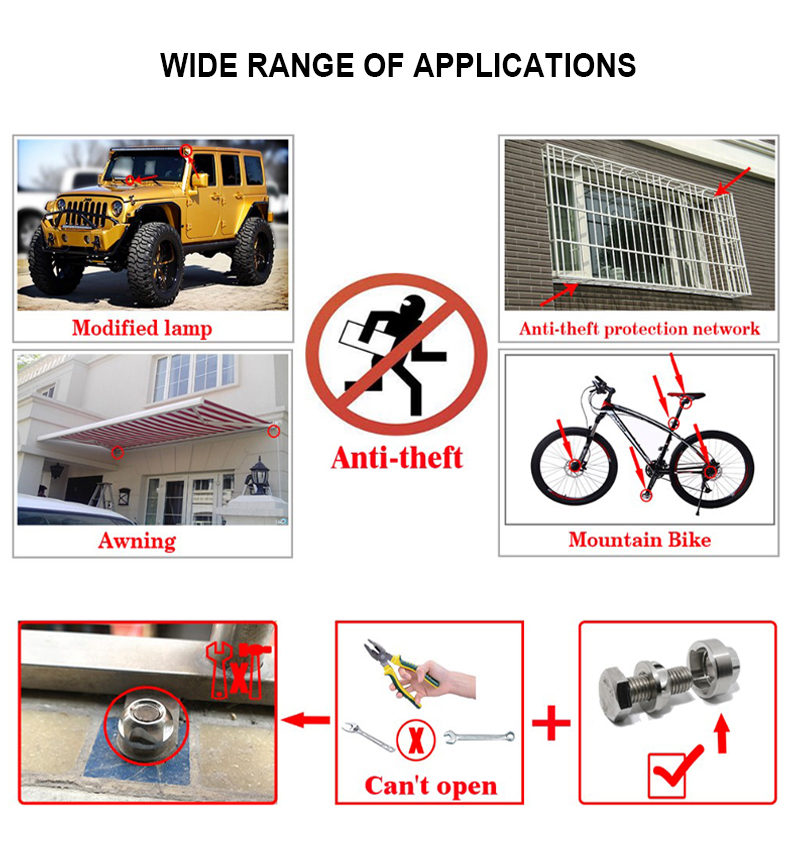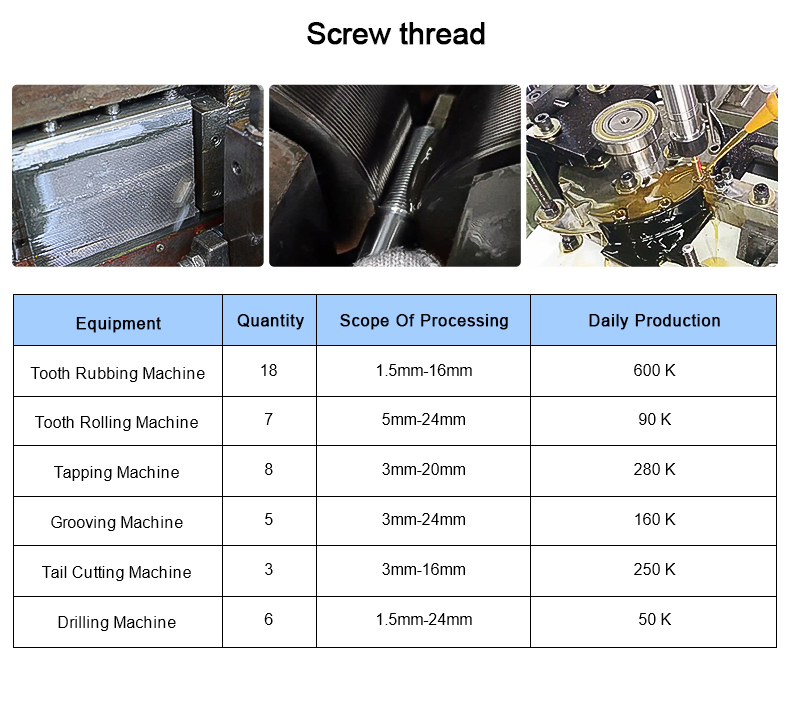



La fijación y apertura de pernos y tuercas adopta un diseño no estándar, y la coincidencia
Para resolver los problemas de apertura y fijación se utilizan herramientas no estándar. En general, se utilizan otras
no se pueden insertar llaves. En el diseño de apariencia de tuercas y tornillos, ranurado no estándar.
apertura o herramientas de ranura pentagonal, heptagonal, de nueve esquinas o a medida correspondiente
han desempeñado un muy buen efecto antirrobo

El proceso de estampado en frío es uno de los nuevos procesos de mecanizado a presión de menor o ningún corte
Se trata de un método de transformación que utiliza la deformación plástica del metal bajo la acción de los agentes atmosféricos.
fuerzas externas y, con ayuda de moldes, redistribuye y transfiere el volumen de metal para formar
las piezas o formatos necesarios. El proceso de estampación en frío es el más adecuado para producir piezas estándar.
elementos de fijación como pernos, tornillos, tuercas, remaches, pasadores, etc.


A cable de seguridad perno es una fijación especializada diseñada para evitar el aflojamiento o desprendimiento debido a vibraciones, ciclos térmicos u otras fuerzas dinámicas. Suele utilizarse en industrias de alto riesgo, donde el fallo de una unión atornillada podría tener consecuencias catastróficas. cable de seguridad perno
Características clave de un perno de alambre de seguridad:
- Propósito:
- Evita que los pernos, tuercas u otros elementos de fijación se aflojen con las vibraciones o el movimiento.
- Garantiza la integridad de las conexiones críticas en entornos de alta tensión.
- Diseño:
- El tornillo suele tener un orificio taladrado en la cabeza o el vástago.
- Un alambre metálico (a menudo de acero inoxidable) se enhebra a través del orificio y se fija a los pernos adyacentes o a una estructura fija.
- Instalación:
- El alambre se retuerce con fuerza y se encamina siguiendo un patrón específico para crear tensión, asegurando que el perno no pueda girar suelto.
- La instalación correcta requiere habilidad y el cumplimiento de las técnicas de torsión de cables de seguridad.
- Materiales:
- Los pernos suelen estar fabricados con materiales de alta resistencia, como acero inoxidable, titanio o acero aleado.
- El cable de seguridad suele ser de acero inoxidable para ofrecer resistencia a la corrosión y durabilidad.
Aplicaciones:
- Aeroespacial: Se utiliza en motores de aviones, trenes de aterrizaje y otros sistemas críticos.
- Automoción: Se encuentra en coches de carreras y vehículos de alto rendimiento.
- Maquinaria industrial: Aplicado en maquinaria pesada sometida a vibraciones.
- Militar y Defensa: Se utiliza en vehículos, armas y equipos.
- Marina: Garantiza la fiabilidad en embarcaciones y buques expuestos a movimientos constantes.
Ventajas:
- Fiabilidad: Proporciona un mecanismo a prueba de fallos para evitar el aflojamiento.
- Durabilidad: Resiste la corrosión y el desgaste en entornos difíciles.





Valoraciones
No hay valoraciones aún.